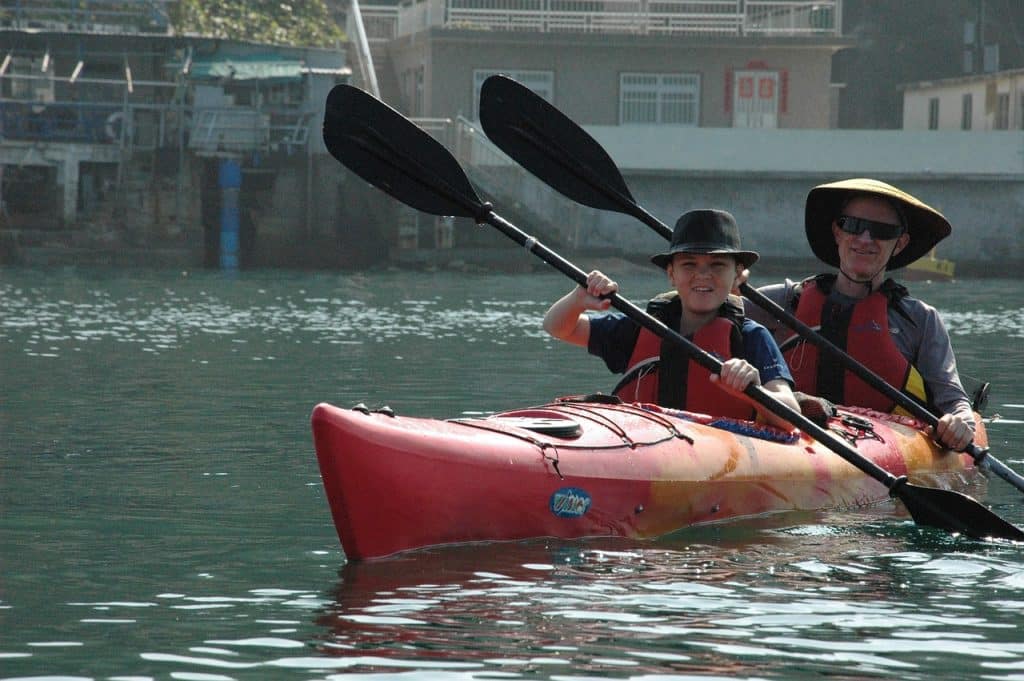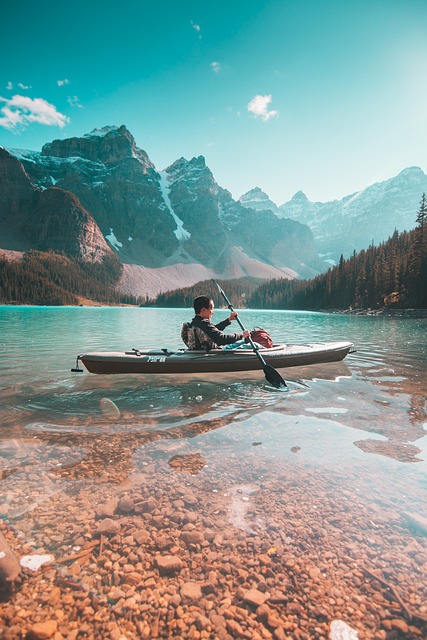Welcome to the Kayaking for Beginners Lesson!
Are you a kayaking enthusiast looking to enhance your skills on the water? This self-guided online lesson is designed specifically for people who love kayaking and want to take their abilities to the next level. Whether you are new to kayaking or have some experience, this lesson is tailored to help you improve your kayaking skills and become a more confident paddler.
Goal: Improve Kayaking Skills
The primary goal of this lesson is to provide you with the knowledge and techniques necessary to enhance your kayaking skills. By following the detailed solutions and exercises outlined in this lesson, you will learn how to navigate various water conditions, improve your paddling efficiency, and master essential kayaking maneuvers. Whether you aspire to explore serene lakes or tackle challenging whitewater rapids, this lesson will equip you with the skills needed to navigate the waters with confidence.

When it comes to kayaking, having the right gear and equipment is essential for both safety and enjoyment on the water. Here's a breakdown of the basic gear and equipment you'll need to get started:
Kayak: The first and most important piece of equipment is, of course, the kayak itself. There are different types of kayaks, including sit-on-top, sit-inside, inflatable, and touring kayaks. Choose a kayak that suits your skill level and the type of water you'll be paddling on.
Paddle: A kayak paddle is used to propel and steer the kayak. Paddles come in various lengths and materials, so make sure to choose one that is comfortable for you to use.
Personal Flotation Device (PFD): A PFD is a crucial safety item that every kayaker should wear. Make sure your PFD fits properly and is Coast Guard-approved.
Spray Skirt: If you're using a sit-inside kayak, a spray skirt can help keep water out of the cockpit, especially in rougher conditions.
Helmets: For whitewater kayaking or rough conditions, wearing a helmet is essential to protect your head in case of a capsize or collision.
Clothing: Dress for the water temperature, not the air temperature. Wear quick-drying clothing and consider investing in a wetsuit or drysuit for colder conditions.
Safety Gear: In addition to a PFD and helmet, carry essential safety gear such as a whistle, flashlight, first aid kit, and a tow rope in case of emergencies.
By ensuring you have the right gear and equipment before heading out on the water, you'll be better prepared to improve your kayaking skills and have a safe and enjoyable paddling experience.
To improve your kayaking skills, it is essential to master basic kayaking techniques and strokes. These fundamental skills will not only make your kayaking experience more enjoyable but also help you navigate different water conditions with confidence.
Forward Stroke: The forward stroke is the most basic and essential kayaking technique. To perform this stroke, reach forward with your paddle, submerge it fully in the water near your toes, and pull it back towards your hip. Keep your upper body rotation smooth and engage your core muscles for power.
Reverse Stroke: The reverse stroke is used to go backward or slow down. Start by placing the blade of your paddle behind you in the water, near your hip, and pull it towards your toes. This stroke is handy for maneuvering in tight spots or reversing direction.
Sweep Stroke: The sweep stroke is used to turn your kayak. To execute this stroke, start with your paddle blade near the kayak's bow, sweep it in a wide arc towards the stern, and finish near your hip. This stroke is crucial for making sharp turns or adjusting your course.
Draw Stroke: The draw stroke is used to pull your kayak sideways. To perform this stroke, reach out to the side with your paddle, submerge the blade in the water, and pull the kayak towards the paddle. This stroke is helpful for moving laterally or edging your kayak.
Bracing Stroke: The bracing stroke is crucial for stability and balance. If you feel like your kayak is tipping, quickly place your paddle blade in the water next to your kayak and push down on it to prevent capsizing. Practice this stroke to build confidence in rougher waters.
When it comes to kayaking, safety should always be a top priority. Follow these essential safety tips and best practices to ensure a safe and enjoyable experience on the water:
1. Wear a Personal Flotation Device (PFD)
Always wear a properly fitted PFD when kayaking, even if you are a strong swimmer. In the event of an accident or capsize, a PFD can save your life by keeping you afloat.
2. Check the Weather Conditions
Before heading out on the water, check the weather forecast and be aware of any potential changes in weather conditions. Avoid kayaking in strong winds, thunderstorms, or rough waters.
3. Learn Self-Rescue Techniques
Practice self-rescue techniques such as how to re-enter your kayak from the water in case of a capsize. Knowing these techniques can help you stay safe and confident in challenging situations.
4. Stay Hydrated and Apply Sunscreen
Bring an adequate supply of water to stay hydrated during your kayaking trip. Additionally, apply sunscreen to protect your skin from harmful UV rays, especially on sunny days.
5. Follow Navigation Rules
Observe and follow navigation rules and guidelines while kayaking, such as yielding to larger vessels, staying out of shipping lanes, and maintaining a safe distance from other watercraft.

When starting out, stay close to the shore or in calm, shallow waters to build your confidence and skills. Avoid venturing too far from land until you are comfortable navigating different water conditions.
By following these safety tips and best practices, you can enhance your kayaking skills while ensuring a safe and enjoyable experience on the water.
Building confidence in kayaking is essential for improving your skills and enjoying your time on the water. One of the best ways to build confidence is through consistent practice and skill development. Here are some tips to help you gain confidence in your kayaking abilities:
1. Start with the basics: It's important to have a solid foundation of basic kayaking skills. Practice your paddling technique, learn how to steer your kayak effectively, and familiarize yourself with safety procedures. Confidence often stems from feeling comfortable and knowledgeable in your abilities.
2. Practice regularly: The more you practice, the more confident you will become. Set aside time to go kayaking regularly, even if it's just for a short paddle around a local lake or river. Each time you get out on the water, you'll gain more experience and improve your skills.
3. Challenge yourself: Once you feel comfortable with the basics, don't be afraid to push yourself out of your comfort zone. Try new techniques, paddle in different conditions, and explore new waterways. Challenging yourself in a controlled environment can help you grow as a kayaker and boost your confidence.
4. Take lessons or join a group: Consider taking kayaking lessons or joining a local paddling group. Learning from experienced instructors or paddling with others can provide valuable feedback, support, and encouragement. Being part of a community of fellow kayakers can also help you feel more confident on the water.
5. Stay safe: Feeling confident in your kayaking skills also involves knowing how to stay safe on the water. Always wear a life jacket, be aware of weather conditions, and follow proper paddling etiquette. When you feel safe and prepared, your confidence will naturally increase.
By focusing on building confidence through practice and skill development, you'll not only improve your kayaking abilities but also enjoy the sense of accomplishment that comes with mastering a new skill. Remember, confidence grows with experience, so keep paddling and challenging yourself to reach new levels of proficiency.
Review and Q&A Session:
Now that we have covered the basic techniques and skills for kayaking, it's time to review and answer any questions you may have. This session is essential for reinforcing what you have learned and clarifying any doubts or concerns.
Let's start by reviewing the key points we have covered so far:
- Proper paddling techniques
- Basic safety rules while kayaking
- How to maneuver the kayak efficiently
- Understanding water conditions and weather factors
During this Q&A session, feel free to ask any questions related to the topics we discussed. Whether you need clarification on a specific technique or want advice on how to improve your skills, this is the perfect time to address any uncertainties.
Remember, the more you practice and seek guidance, the better you will become at kayaking. So, don't hesitate to ask questions and engage in discussions to enhance your kayaking experience!
Keep Paddling Towards Your Goal
People Who Love Kayaking are truly a special breed - adventurous, passionate, and always seeking new experiences on the water. As you navigate your way through the world of kayaking, remember that the key to truly enjoying this sport is to continuously work on improving your skills.
Gain More Confidence on the Water
By dedicating time and effort to improving your kayaking skills, you not only become a better paddler but also feel more confident on the water. Confidence is the foundation of enjoying any activity to its fullest, and kayaking is no exception.
If you feel the need to revisit any parts of this lesson, feel free to do so. Additionally, don't forget to explore the other lessons in this course to further enhance your knowledge and abilities on the water. Keep pushing yourself, stay curious, and most importantly, always have fun out there on your kayak!
Audio
Video
